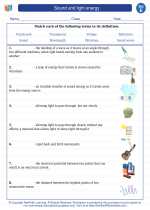Sound and light energy -> earth's surface
Earth's Surface
The Earth's surface is the outermost layer of the planet, consisting of land, water, and the atmosphere. It is constantly changing due to natural processes such as erosion, weathering, and plate tectonics.
Composition of Earth's Surface
The Earth's surface is mainly composed of the following components:
- Lithosphere: The solid, outermost shell of the Earth consisting of the crust and upper mantle.
- Hydrosphere: The combined mass of water found on, under, and above the surface of a planet.
- Atmosphere: The layer of gases surrounding the Earth, held in place by gravity.
Landforms and Features
The Earth's surface is characterized by various landforms and features, including:
- Mountains: Elevated landforms with steep slopes and high peaks.
- Plains: Broad areas of relatively flat land.
- Plateaus: Flat, elevated landforms that are higher than the surrounding area.
- Valleys: Low areas between hills or mountains, often with a river or stream running through them.
- Oceans and Seas: Large bodies of saltwater that cover the majority of the Earth's surface.
Processes Affecting Earth's Surface
Several natural processes contribute to the continuous changes in the Earth's surface:
- Erosion: The movement of weathered material, such as soil and rock, by wind, water, or ice.
- Weathering: The breakdown of rocks and minerals at or near the Earth's surface into smaller particles.
- Plate Tectonics: The movement of the Earth's lithosphere, resulting in the formation of mountains, earthquakes, and volcanic activity.
Human Impact on Earth's Surface
Human activities, such as urbanization, deforestation, and industrialization, have also significantly impacted the Earth's surface. These activities can lead to soil erosion, habitat destruction, and changes in the natural landscape.
Study Guide
- What are the main components of the Earth's surface?
- Describe the different landforms and features found on the Earth's surface.
- Explain the natural processes that contribute to changes in the Earth's surface.
- How have human activities impacted the Earth's surface?
Understanding the Earth's surface is crucial for comprehending the planet's dynamic and ever-changing nature. By studying the composition, landforms, processes, and human impact, we gain a deeper appreciation for the intricate systems that shape our world.
.◂Science Worksheets and Study Guides Fifth Grade. Sound and light energy
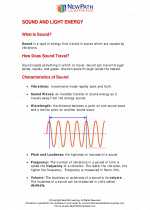
 Activity Lesson
Activity Lesson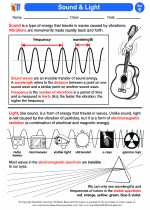
 Worksheet/Answer key
Worksheet/Answer key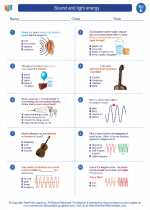
 Worksheet/Answer key
Worksheet/Answer key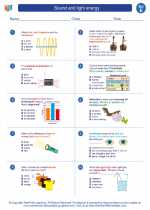
 Worksheet/Answer key
Worksheet/Answer key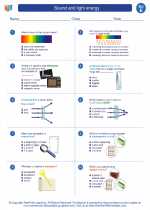
 Worksheet/Answer key
Worksheet/Answer key
 Vocabulary/Answer key
Vocabulary/Answer key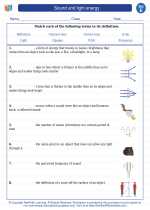
 Vocabulary/Answer key
Vocabulary/Answer key